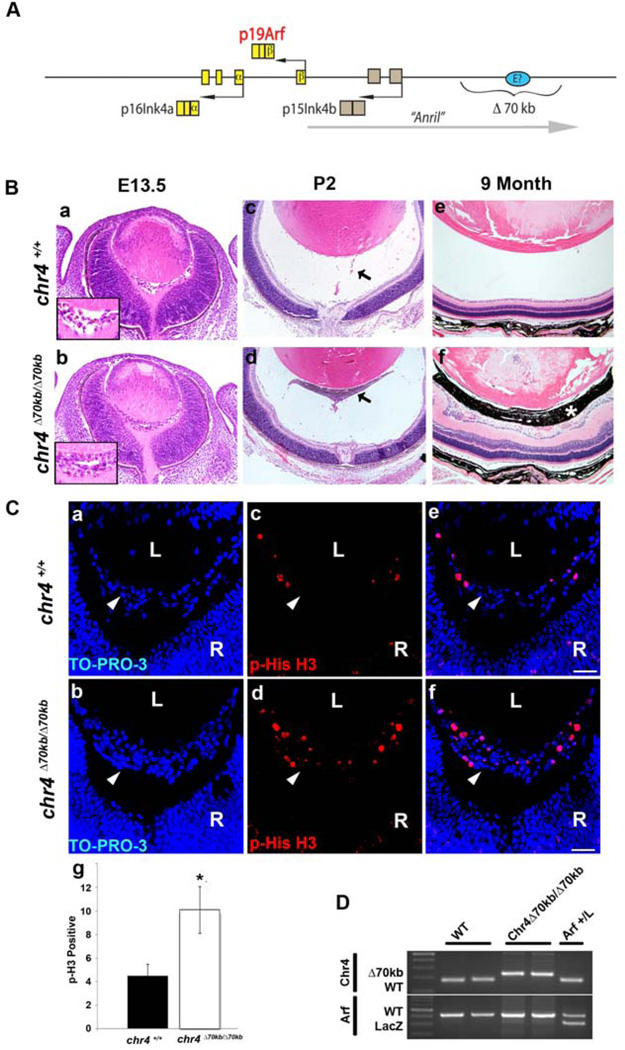Figure 1.
PHPV-like eye phenotype in chr4Δ70kb/Δ70kb mice. (A) Schematic diagram showing Cdkn2a and Cdkn2b genetic loci, which encodes p16Ink4a, p19Arf and p15Ink4b. A long non-coding RNA (lncRNA), AK14831 (putative mouse “Anril”), is transcribed starting proximal to and proceeding upstream of Cdkn2a. A putative enhancer element (E?) may lie within the deleted 70kb segment orthologous to human chromosome 9p21 (see Discussion). (B) Representative photomicrographs of hematoxylin- and eosin-stained slides of E13.5 embryos, P2 and 9 months showing the primary vitreous hyperplasia in chr4Δ70kb/Δ70kb mice (b, d, f) but not in its wild type littermates (a, c, e). Inset (a and b) shows higher magnification of vitreous area. Arrows (c and d) show hyperplastic retrolental mass in mutant eye. Asterisk (f) shows pigmented cells in retrolental mass. Photos were taken at 20×. (C) Representative photomicrographs of immunofluorescence-stained slides of E13.5 embryos showing TO-PRO-3 (a, b), phospho-Histone H3 (c, d) and the overlay (e, f) of primary vitreous hyperplasia in chr4Δ70kb/Δ70kb embryos (b, d, f) and wild type littermates (a, c, e). Photos were taken at 40× magnification. (g) Quantification of the phospho-histone H3 stained E13.5 embryos showed 2-fold increase of phospho-histone H3 staining from chr4Δ70kb/Δ70kb embryos versus those from wild type littermates. L, lens. R, retina. Arrowhead, vitreous. (D) Representative agarose gel showing the genotyping of wild type, chr4Δ70kb/Δ70kb, and Arf+/lacZ mice.

